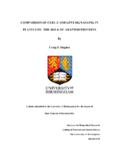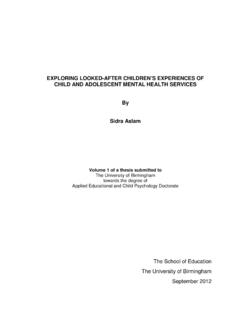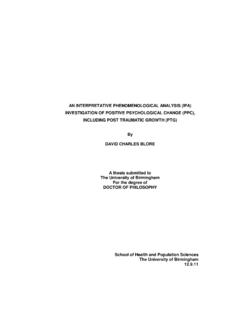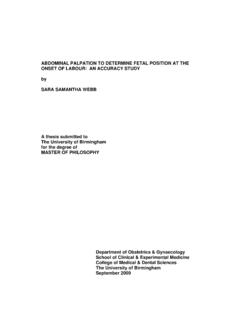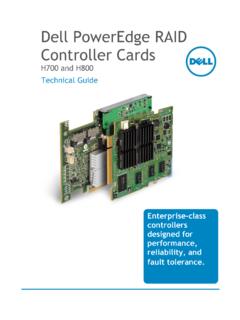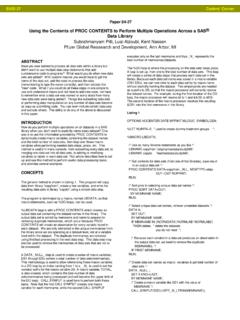Transcription of TAX KNOWLEDGE AND TAX COMPLIANCE …
1 TAX KNOWLEDGE AND TAX COMPLIANCE determinants IN self assessment SYSTEM IN MALAYSIA by MOHD RIZAL PALIL A thesis submitted to The University of Birmingham for the degree of DOCTOR OF PHILOSOPHY Department of Accounting and Finance Birmingham Business School The University of Birmingham 2010 University of Birmingham Research Archive e-theses repository This unpublished thesis/dissertation is copyright of the author and/or third parties. The intellectual property rights of the author or third parties in respect of this work are as defined by The Copyright Designs and Patents Act 1988 or as modified by any successor legislation. Any use made of information contained in this thesis/dissertation must be in accordance with that legislation and must be properly acknowledged.
2 Further distribution or reproduction in any format is prohibited without the permission of the copyright holder. ii ABSTRACT self assessment system (SAS) has become the key administrative approach for both personal and corporate taxation in developed countries including the USA, UK and Australia. This approach emphasises both the taxpayers responsibility to report their income and the need for them to determine their own tax liability. Central to the motivations of self assessment system introduction is an increase in the efficiency of tax collection for the tax authority; however, of more vital importance is the need to enable this without having an unacceptable detrimental effect on the other key characteristics of a well-designed tax system (equity, wider administrative efficiency etc).
3 This requires the development of public awareness of tax laws, and improvements in voluntary COMPLIANCE . According to prior studies on this topic one of the main facilitating factors in achieving these aims is the development of the level of tax KNOWLEDGE among taxpayers. The objective of this study is to investigate how facilitating factors interact in the development of a suitable SAS focusing in particular on the role of tax KNOWLEDGE . To explore the interaction in the real setting the country of Malaysia is used as a case tax system for this study. This country is due to chosen its fairly recent introduction of SAS enabling a specific focus on changes brought about by the move to a SAS with as little time for noise creating factors as possible that may result from longer implemented SAS.
4 It also enables a study of this topic in the context of a developing country where many of the prior studies in this area have had in the context of developed countries. This study focuses on the level of individual Malaysian taxpayers KNOWLEDGE and explores how tax KNOWLEDGE levels influence tax COMPLIANCE behaviour in a new SAS. Data was collected through a large scale national postal survey resulting in 1,073 responses. Five stages were used to facilitate the analysis. Stage 1, using the t-test and ANOVA, focuses on the characteristics of taxpayers KNOWLEDGE including gender, ethnicity, educational level and income level.
5 Stage 2 attempts to describe the relationship between tax KNOWLEDGE and tax COMPLIANCE using multiple regressions. Stage 4 examines taxpayers COMPLIANCE determinants more widely than tax KNOWLEDGE . Nine variables were tested in Stage 4. Control variables were added in both Stage 3 and Stage 5 in order to assess whether the inclusion of control variables significantly affects tax COMPLIANCE behaviour. The results suggested that tax KNOWLEDGE has a significant impact on tax COMPLIANCE even though the level of tax KNOWLEDGE varies significantly among respondents. The results also indicate that tax COMPLIANCE is influenced specifically by probability of being audited, perceptions of government spending, penalties, personal financial constraints, and the influence of referent groups.
6 Results of this study answer such questions as which various taxpayer characteristics of tax KNOWLEDGE affect compliant behaviour. The results of this study can inform policymakers on the extent to which tax KNOWLEDGE is important in a self assessment system and in what ways it can affect COMPLIANCE . It also provides an indicator for tax administrators of the relative importance of tax KNOWLEDGE in assisting with the design of tax education programmes, simplifying tax systems and developing a iiiwider understanding of taxpayers' behaviour. This study contributes to current global literature in this field of the relative importance of tax KNOWLEDGE in affecting tax COMPLIANCE , as well as exploring the factors that make people pay taxes in a self assessment system, and discusses methods of increasing voluntary COMPLIANCE .
7 IvDEDICATION To my late father, father in law, and mother in law, mother, wife and children. vACKNOWLEDGEMENT I am heartily thankful to my supervisors, Andrew Lymer and Prof. Ranko Jelic, whose encouragement, guidance and support from the initial to the final level enabled me to develop an understanding of the subject. Their insightful scholarship and meticulous accuracy were instrumental in shaping this work into its final form. This thesis would not have been possible without constant support from my employer, Universiti Kebangssan Malaysia and the Government of Malaysia in granting me a scholarship and study leave at the University of Birmingham.
8 Also, special thanks to the Tax Research Institute of the University of Nottingham for their substantial financial assistance in the data collection process. My sincere thanks are also due to all my teachers in Sekolah Kebangsaan Bukit Kapar, Sekolah Menengah Meru, Sekolah Teknik Tuanku Jaafar, Kolej MARA Seremban, and Universiti Kebangssan Malaysia. My heartiest thanks to all my colleagues and friends who supported me during my study. Words are not enough to describe my indebtedness to my late father, Palil bin Muhammad, and my late mother in law, Seripah Nor Syed Agil who passed away during the time that this thesis was written.
9 My father has sacrificed so much for my family members and has helped me become who I am now and placed me on the path where I am today. I am grateful to my mother, Tiah binti Salleh who has been praying for me and has sacrificed every single thing she had for all her nine children. Lastly, my deepest gratitude to my wife, Nor Hazila Mohd Zain, my children, Nur Aishah, Muhammad Adam, Nur Amiera and Nur Arissa for their continuous love and support every single minute. To the above-mentioned people and to those who have not been mentioned, your sacrifice and encouragement are greatly appreciated and will always be in my memory.
10 ViTABLE OF CONTENTS Abstract ii Dedication iv Acknowledgement v List of illustrations xv List of tables xvi List of abbreviations xix CHAPTER 1 - INTRODUCTION INTRODUCTION AND THESIS OVERVIEW 1 PROBLEM STATEMENTS 8 OVERVIEW OF MALAYSIA AS A COUNTRY AND WHY MALAYSIA IS SELECTED IN THIS STUDY?
